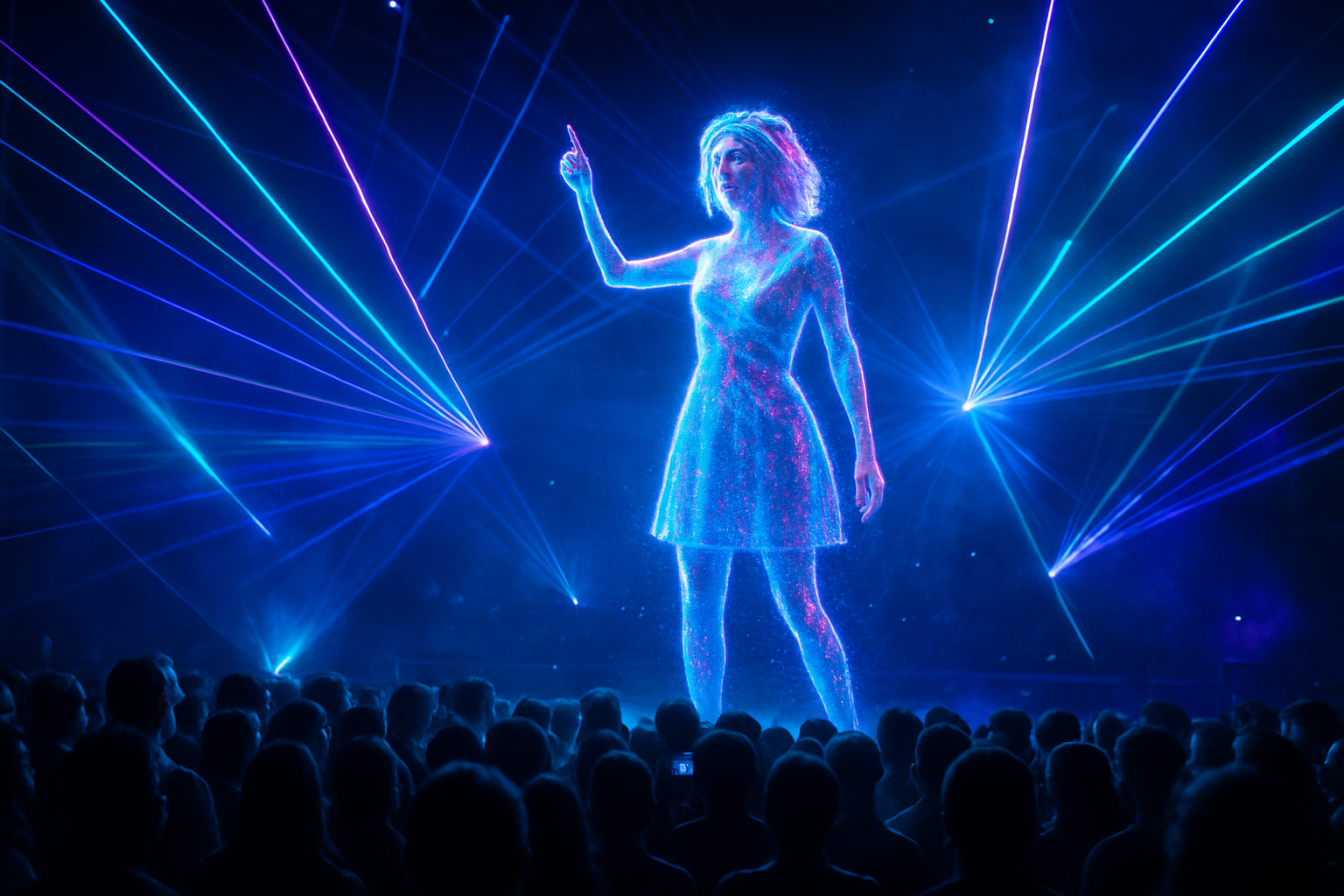Holographic Performers: The Future of Live Entertainment
In the ever-evolving landscape of live entertainment, a groundbreaking technology is reshaping the way we experience concerts and performances. Holographic performers, once confined to the realm of science fiction, are now taking center stage in venues across the globe. This revolutionary approach to live shows is not only pushing the boundaries of what's possible in entertainment but also raising intriguing questions about the nature of performance itself. As holographic technology continues to advance, it's clear that we're witnessing the dawn of a new era in the world of live events.

Beyond Novelty: The Rise of Holographic Tours
What began as a headline-grabbing novelty has evolved into a legitimate form of entertainment. In recent years, we’ve seen holographic tours featuring deceased artists like Roy Orbison and Whitney Houston sell out venues worldwide. These tours offer fans a chance to experience the magic of iconic performers who are no longer with us, creating a unique blend of nostalgia and cutting-edge technology.
The Technology Behind the Illusion
The creation of a holographic performer involves a complex interplay of advanced technologies. High-definition video projectors, proprietary screens, and sophisticated motion capture techniques are combined to create the illusion of a three-dimensional performer on stage. The latest systems can even incorporate real-time interactions, allowing holographic artists to respond to audience reactions, creating a more immersive and engaging experience.
Ethical Considerations and Artistic Integrity
As holographic performances become more commonplace, they’ve sparked debates about artistic integrity and the ethics of posthumous performances. Critics argue that these shows exploit the legacies of deceased artists, while supporters contend that they celebrate and preserve musical heritage. The industry is grappling with questions of consent, artistic vision, and the boundaries between tribute and exploitation.
The Impact on Live Entertainment Industry
Holographic performances are reshaping the live entertainment landscape in profound ways. They offer new revenue streams for estates of deceased artists and provide opportunities for living performers to expand their reach. Venues can now host multiple shows simultaneously or bring international acts to local stages without the logistical challenges of traditional tours. This technology is also influencing stage design, lighting, and sound engineering, pushing the entire industry to innovate.
Looking to the Future: Holographic Innovations
The potential applications of holographic technology in entertainment are vast and largely unexplored. We’re seeing early experiments with holographic duets between living and deceased artists, interactive holographic meet-and-greets, and even the creation of entirely new holographic performers. As the technology continues to advance, we can expect to see more immersive and interactive experiences that blur the lines between physical and digital performance.
Challenges and Limitations
Despite its potential, holographic technology still faces significant challenges. The cost of producing high-quality holographic shows remains prohibitively expensive for many, limiting its widespread adoption. There are also technical hurdles to overcome, such as improving the realism of holographic projections and enhancing their ability to interact with live elements on stage. Additionally, there are concerns about the potential for deepfake technology to be used in creating unauthorized or manipulated holographic performances.
The Audience Perspective
The reception of holographic performances among audiences has been mixed. While many are thrilled by the novelty and spectacle of these shows, others find them lacking the spontaneity and energy of traditional live performances. As the technology improves and becomes more widespread, it will be crucial for creators to find ways to maintain the emotional connection and authenticity that audiences crave from live entertainment.
Holographic Performances in a Post-Pandemic World
The COVID-19 pandemic has accelerated the adoption of digital technologies in the entertainment industry, and holographic performances are no exception. As venues and promoters look for ways to offer safe and engaging experiences, holographic shows present an attractive option. They allow for social distancing while still providing the excitement of a live event, potentially paving the way for a hybrid model of entertainment in the future.
In conclusion, holographic performances represent a fascinating convergence of art, technology, and entertainment. As this medium continues to evolve, it promises to offer new creative possibilities for artists, novel experiences for audiences, and fresh challenges for the entertainment industry as a whole. While questions remain about its long-term impact and ethical implications, there’s no doubt that holographic technology is reshaping the landscape of live entertainment in profound and exciting ways. As we look to the future, it’s clear that the stage is set for a new era of performance that transcends the boundaries of time, space, and reality itself.





